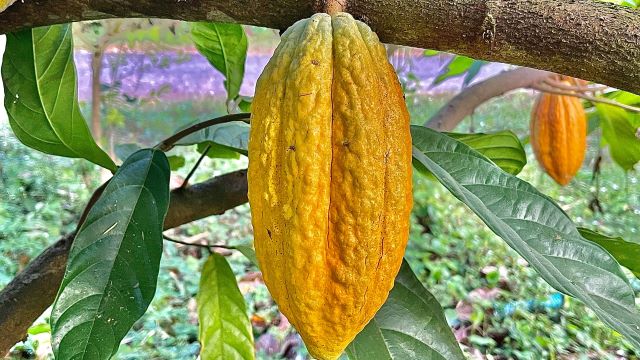In the humid lowlands of Côte d’Ivoire, the scent of fermenting cocoa beans hangs in the air, mingling with the earthy aroma of freshly turned soil. Under the shade of towering cacao trees, farmers move with deliberate precision, splitting pods to reveal the pale, sticky beans within—a process honed over generations. Yet behind this timeless ritual, a growing unease is taking root.
Global cocoa prices have been sliding, and for the smallholder farmers who produce much of the world’s supply, the decline threatens more than just profits. Côte d’Ivoire, alongside Ghana, accounts for over 60 percent of global cocoa production, and the livelihoods of millions are intertwined with the volatile swings of the international market.
The reasons for the price slump are complex: fluctuating supply and demand, shifts in global consumption, and currency instability in producing nations. The fall in prices comes at a time when farmers are already contending with climate change, erratic rainfall, and the spread of crop diseases like black pod and swollen shoot virus. For many, the reduced earnings are insufficient to cover the costs of fertilizer, tools, and hired labor, forcing difficult choices—cutting back on farm maintenance, reducing household spending, or turning to other crops entirely.
The repercussions ripple far beyond the groves. In cocoa-growing regions, diminished incomes can lead to stalled infrastructure projects, reduced access to healthcare, and children being pulled from school to help on family farms. The pressures also carry environmental consequences: without resources to invest in sustainable cultivation, some farmers resort to clearing additional forest land or using low-cost, harmful chemicals to maintain yields, placing fragile ecosystems at further risk.
Local cooperatives and international organizations have sought to cushion the blow, promoting fair trade certifications, sustainability programs, and training in diversified farming. While such initiatives have helped some communities stabilize incomes, they remain far from universal. Advocates argue that meaningful change will require a combination of stable pricing mechanisms, stronger farmer cooperatives, and greater consumer awareness in importing countries.
In the marketplaces of Abidjan and San-Pédro, sacks of cocoa beans continue to change hands, their value determined by forces far removed from the red soil in which they were grown. For the farmers of Côte d’Ivoire, each transaction is a reminder that their work—delicate, labor-intensive, and vital to a global appetite—remains at the mercy of a market that rarely reflects the true cost of production.
Sources:
- International Cocoa Organization (ICCO), Quarterly Bulletin of Cocoa Statistics, 2024.
- Food and Agriculture Organization of the United Nations, Cocoa Market Review, 2023.
- Fairtrade International, Impact Report on West African Cocoa Producers, 2023.


